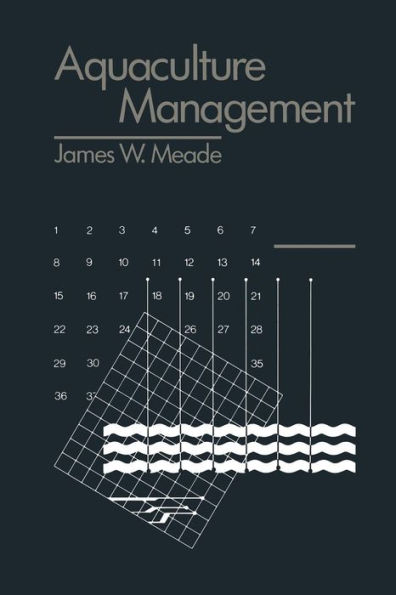5
1


Paperback(Softcover reprint of the original 1st ed. 1989)
$54.99
-
PICK UP IN STORECheck Availability at Nearby Stores
Available within 2 business hours
Related collections and offers
54.99
In Stock
Overview
Although some nations, such as Japan, have invested in aquaculture research and developed major aquaculture industries, the opportunities for similar development in the United States remain largely unnoticed. In a typical recent year the United States, which claims 20% of the world's marine fisheries resources, imported seafood worth $4. 8 billion and exported $l. 3 billion. In addition to the $3. 5 billion deficit in food-fish, was another $2. 7 billion deficit for nonedible fishery products. Next to oil, fishery products constituted the second highest drain on the United States balance of payments and accounts for a significant portion of the foreign trade deficit. Furthermore, fish consumption has been increasing in North America. In response to the demand for fishery products, aquaculture managers not only have the opportunity to realize economic profit, but in doing so can make an important contribution to reducing the national debt, providing employment, and enhancing our diet. This book might be considered a farm management text for those in aquaculture. It is intended to provide an introduction to aquaculture principles and an introduction to management, including business and people management, microeconomics, and the concepts of efficiency and productivity. I hope it will bridge the gap between conservationists, the academic community, and commer cial culturists. Abundant references should enable the reader to quickly access literature on most topics germane to the management of culture systems.

Product Details
| ISBN-13: | 9781461564720 |
|---|---|
| Publisher: | Springer US |
| Publication date: | 04/12/2012 |
| Edition description: | Softcover reprint of the original 1st ed. 1989 |
| Pages: | 175 |
| Product dimensions: | 5.98(w) x 9.02(h) x 0.02(d) |
Table of Contents
One: Perspectives.- 1. Principles of Fish Culture and Aquaculture Systems.- Definition, Principles, and Need for Management.- The Culture System Spectra.- World Overview.- Freshwater.- Saltwater.- Temperature.- Organizational Systems.- Operational Systems and Degree of Intensification.- Summary.- 2. Principles of Culture Systems Management.- Management Definitions and Approaches.- The Job of Management.- Management Functions and Activities.- Planning and Organizing.- Decision Making.- Control and Evaluation.- Accepting Responsibility.- Management Styles and Attributes of Successful Managers.- Scope of Aquaculture Management.- Bottom Line.- Managing to Achieve Objectives.- Financial Analyses Miss the Point in the Public Domain.- Sometimes Financial Analyses Do Not Miss the Point.- Summary.- 3. Approaches to People (Using Human Resources).- Contingency Theory.- Management Skills.- Leading and Motivating.- Motivating (Maslow) Needs Hierarchy.- Communicating and Active Listening.- Using Performance Plans and Examples of a Performance Standard.- Productivity.- What is Productivity?.- The Manager’s Mandate and Enhancing Effectiveness.- Beginning.- Summary.- 4. Marketing.- Functional and Institutional Aspects of Marketing.- Performance.- Cooperatives.- Marketing Studies and Test Marketing.- Strategies for Cultured Products.- Summary.- 5. Life Cycles and Production Strategies.- Enterprises and the Concept of Mixing.- Energy Flow.- Summary.- 6. Water and Health Management.- Water Management.- Quality.- Aeration, Oxygen Injection, Atmospheric Exchange.- Metabolites.- Buffering and Toxicity Mediators.- Complementary Use.- Effluent: Environmental Impacts and Treatment.- Managing Metabolites.- Site Selection.- Health Management.- Recognition.- Planning: Management of the Water Supply.- Design.- Management.- 7. Ethics.- Business and Government.- Environmental Ethics: From Management of Scarce Natural Resources to Commodity Production for Human Consumption.- Moral Standing.- Animal Rights.- Preserving Rare Species.- Conclusions.- Professionalism and Legislated Ethics (for Public Domain Managers).- Two: Quantitative Approaches.- 8. Production Economics.- Microeconomic Principles.- Fixed and Variable Costs.- Marginal Analysis.- Cost Concepts (in Decision Making).- Timid Costs of Ownership.- Taxes.- Interest.- Maintenance.- Insurance.- Depreciation.- Total Ownership Costs.- 9. Records for Managerial Analyses.- Record Keeping.- Enterprise Budgets.- Cash Flow.- Financial Statement.- 10. Production System Limits.- Capacity Estimates.- A Fairyfish Tail.- Dissolved Oxygen and Metabolites.- Production Capacity Assessment (PCA).- Detailed Procedure for PCA.- 11. Decision-Making Tools.- Partial Budgeting.- The Delphi Technique.- Benefit-Cost Analysis.- Present Value Analysis.- Five Additional Analysis Techniques.- Sensitivity Analysis.- Decision Trees.- 12. Computer Assisted Decision Support Systems.- Analytic Hierarchy Process.- AHP Decision Analysis for Procurement, Installation, and Use of Oxygenation Equipment.- Linear Programming.- Appendixes.- Appendix I. Manager Attributes and Expectations.- Appendix II. Suggested Steps for Learning to Read People.- Appendix III. Examples of Enterprise Budgets, Cash Flow, and Credit Repayment Schedules.- Appendix IV. Life-Cycle Costing.- Appendix V. Sample Calculation to Determine the Number of Fish that Can be Reared in a Unit (Tank) That Receives 5 Gallons Per Minute (GPM) Water Flow.- Appendix VI. Sample Problems on Production Capacity Assessment (PCA).From the B&N Reads Blog
Page 1 of
